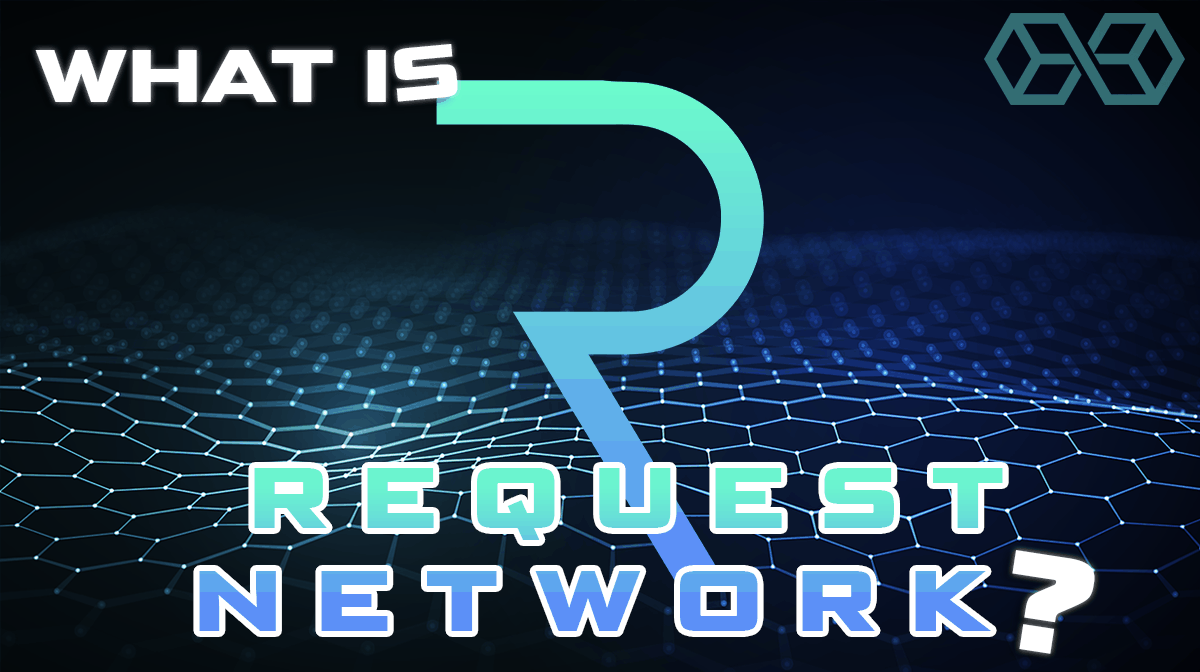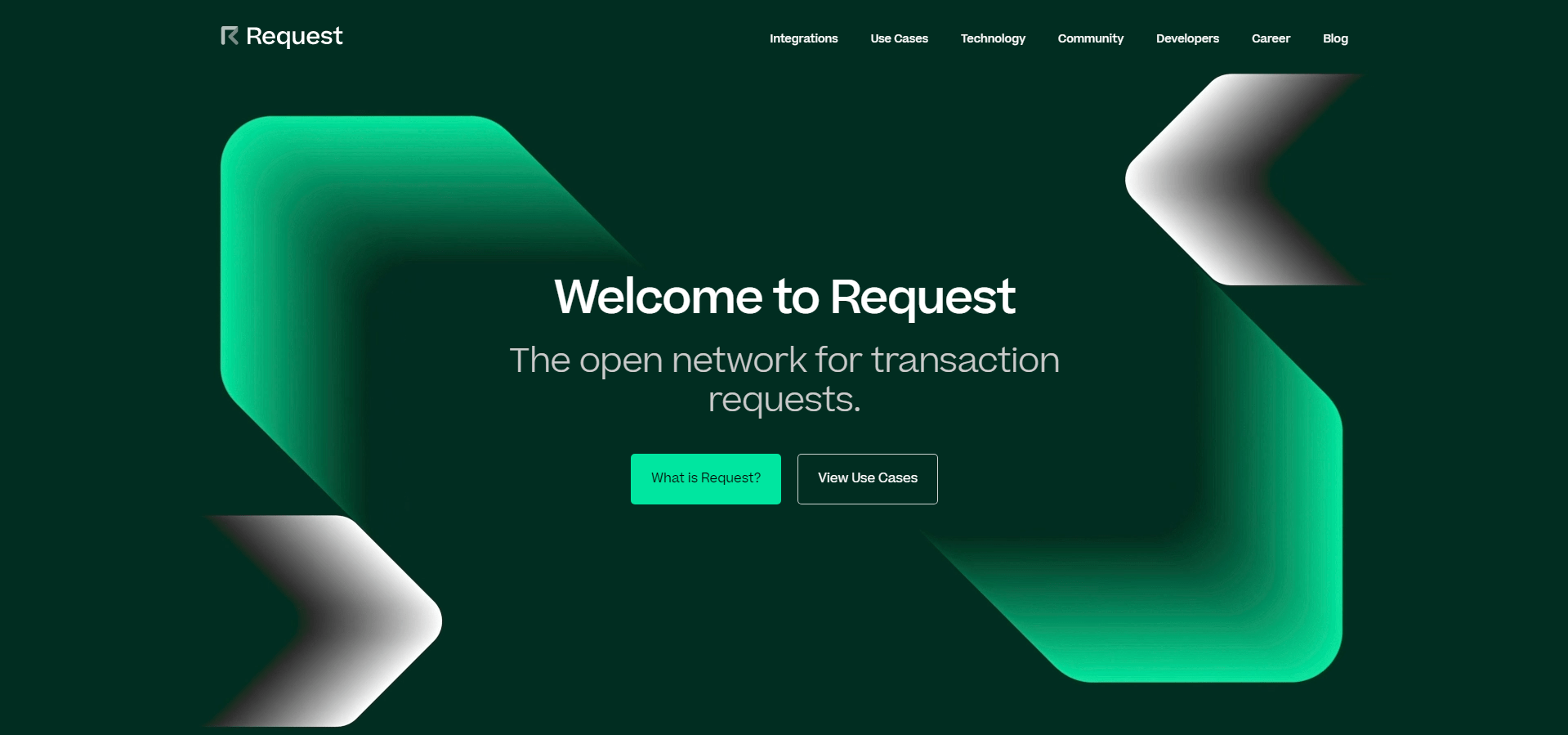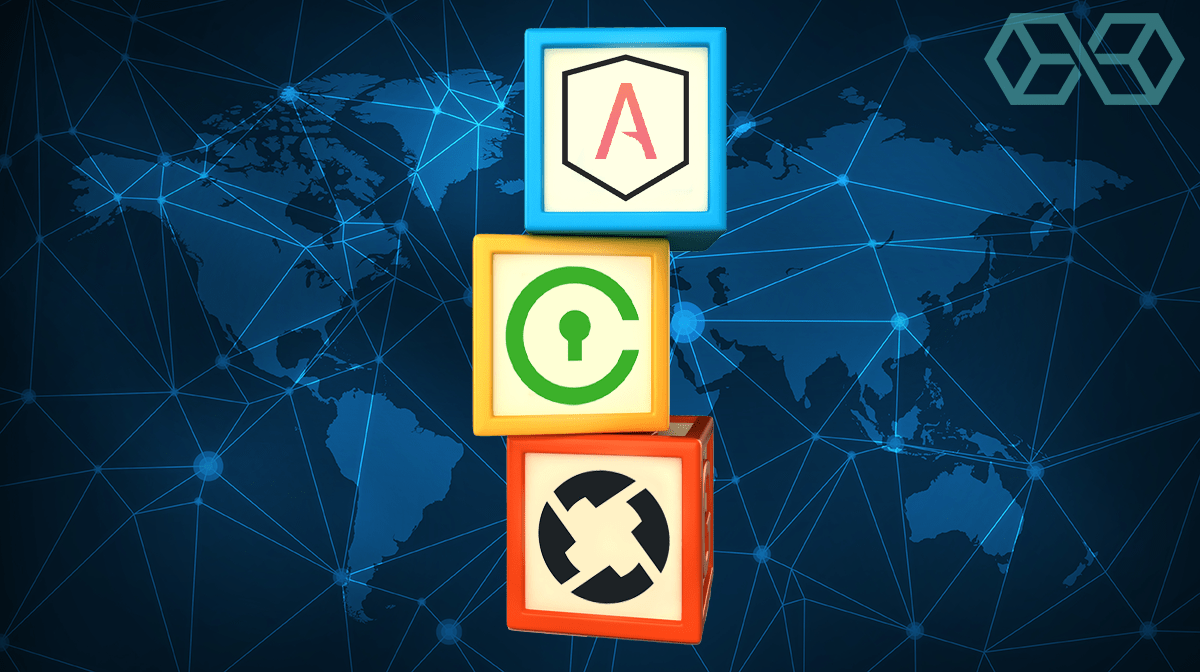The ICO world is no stranger to lofty goals. But even in this world, Request Network’s aim to be the ‘Future of Commerce’ is an ambitious one. Its token sale in October 2017 was a great success. Since then, the Request Network team continues to plow along on its development roadmap.

In this article, we will take a look at the concept behind Request Network, how its token sale went, its latest updates, and of course, whether this new project is worth your investment. Ambition is one thing, but the execution is another. Can Request Network deliver?
The Concept behind Request Network
The concept envisioned for Request Network is for it to become the world’s foremost decentralized network for payment requests. Do you need to pay for an invoice, loan, or even salaries? Request Network will provide a decentralized general ledger that will allow you to do all that with maximum transparency (since everything is recorded on the blockchain) and minimum costs. The developers sum up its benefits with three simple S’: Security, Simplicity, and Savings.

Request Network aims to become the ‘backbone of world trade’. The developers have even envisioned its role as the ‘Internet of Things’ becomes more commonplace. One hypothetical example cited in their whitepaper is an autonomous car connecting to a smart garage contract to purchase a new wheel.
Request Network’s Main Features
The core idea is simple. The payee makes a payment request via Request Network. The payer, upon accepting the request, pays the payee through Request Network. Both the payment request and the payment are registered as a single ledger entry on the blockchain, ensuring a clear and immutable record. And because payment information is never shared, the risk of a malicious party intercepting banking information is negated.

The above is the core layer of Request Network. Surrounding the core layer are two additional layers – extensions and applications. The extensions layer allows for the various payment conditions for example payment terms, advances, escrows, and taxes. This will be an open layer, and anyone could potentially create their own extensions. The outermost applications layer takes place outside the blockchain. This layer is where the various systems from different corporations connect to Request Network.
Reputation Application
In order to incentivize timely payment of requests, the developers have also included a reputations feature in the applications layer. A payer that does not pay invoices on time after accepting a request will have a reputation penalty. Scammers can similarly be avoided. Meanwhile, payers with good reputations could potentially receive cost reductions or access to custom extensions.

Smart Audit
Auditing is a major part of our current financial system, and Request Network intends to make it a part of their system as well. Because Request Network will be a ‘one-stop-shop’ for all transaction information, it will be the definitive yet easily accessible source of accounting entries, making the auditing process far more efficient. It won’t replace current accounting systems; just improve it.
Request Network’s Fees
Those of us who are paid through payment providers such as PayPal know just how exacting their fees can be. Request Network’s fees will be charged through the extensions layer mentioned above and charged on each extension. This fee will be partially transferred to extension developers and partially burned.

The developers have estimated said fees to be from 0.05% to 0.5% initially, though they expect the figure to go down as the system grows. In addition, the core layer will also cost a nominal amount of Ethereum gas with a maximum fee cap of $1.
Request Network Stablecoin Support
Request Network allows businesses to accept cryptocurrency payments easily and integrate these payments automatically into their accounting systems.
However, one of the major barriers to adoption of cryptocurrencies as a means of payment is their volatile nature, which has led some merchants to explore the use of stablecoins.
Request Network have recently announced support for several stablecoins, which makes it easier than ever for users to request and transact in fiat-backed cryptos – such as accepting crypto as a form of payment.
These stablecoins include USDC, PAX, TUSD, and DAI, which are attractive ways to get paid in digital assets for blockchain-based businesses. Request Network has indicated that more stablecoins will be added in the future.
The Building Blocks of Request Network
Like many new cryptocurrencies, Request Network is built on top of the Ethereum platform. Even past that, the developers are open about using other blockchain bricks to build Request Network upon.

The first brick is 0x, a permissionless protocol allowing for ERC20 tokens to be traded on the Ethereum blockchain. The developers are building upon this to create a cross-currency settlement system, recognizing that one’s payment currency is not always one’s storage currency. Request Network has also partnered with Kyber Network a system which allows exchange and conversion of digital assets. This gives users two options to pay a request when they do not token of the requested currency.
The second brick is Civic, a blockchain-based secure identity platform. Request Network builds upon this to allow different ‘Identity’ providers (e.g., governments, banks, trusted companies) to be plugged into the system.
The third brick is Aragon, a blockchain-based governance protocol. Request Network intends to build upon Aragon’s goal of decentralized organizational structures by providing automated accounting, auditability, and ultimately, total financial transparency.
The Team that Created Request Network
The team behind Request Network (based in Berlin) is the exact same team behind Moneytis, a money transfer platform. Request Network has said in a blog post that Request Network is a ‘pivot’ from Moneytis, which they viewed to be not ambitious enough. Moneytis was also incubated by Y Combinator, and since the pivot, Request Network is too a Y Combinator company.
The Request Network Token Sale – Results
Request Network’s token sale commenced on October 13 with 500 million REQ tokens to be distributed, representing 50% of the total supply. All tokens were distributed within 3 days, way ahead of schedule, hitting the cap of 100,000 ETH (1 ETH = 5,000 REQ) – a clear success. All in a total of 11,467 people participated in the token sale.

A further 20% of the REQ supply was saved for early backers and contributors while the remaining 30% is being retained by the team. Of this 30% half will be used for its external development fund while the other half is for the team and its advisors; to be vested within two years. In line with this breakdown, the current circulating REQ supply as of January 9, 2018, is about 641 million tokens.
Where can You Trade Request Network Tokens?
Currently, Request Network (REQ) tokens are available to trade on Binance, OKEX, Huobi, and Kucoin.
What’s the Current Status, and what’s next?
Request Network is currently in Phase 3 of its six-phase roadmap, codenamed ‘Request Great Wall’, slated to last for the first quarter of 2018. It just completed Phase 2, ‘Request Colossus’ at the end of 2017. Request Network now has a full demo that you can access here if you want to see how Request Network will function when it goes live.

At present (January 9, 2018), Request Network can only accept ETH as payments (and not even real ETH as it is merely at a demo stage. The developers aim to deliver the first iteration a Main Net version of Request network that will work with Ethereum in this quarter. The next step is to accept all ERC20 tokens, followed by BTC, and even fiat currencies. Another feature to be launched is a ‘Pay with Request’ button (similar to the ‘Pay with PayPal’ button).
Finally, and perhaps most importantly, the developers target to deliver a Proof of Concept of the Request Network core working with a Bitcoin Oracle by the end of this quarter. You can check out the technical mindmap that the developers have envisioned for Request Network to see the extent of their vision.
Can Request Network Deliver?
Right now, the question of whether Request Network can deliver on its promises is still up in the air. While it has so far managed to achieve all the milestones on its roadmap, it yet has a long way to go, and the real challenges still lie ahead.

But with the price of Ethereum increasing from about $335 at the closing of their token sale to $1,188 as of January 9, 2018, the Request Network team now has a war chest worth almost $120 million from the token sale alone. This amount of money improves their odds of success.
What is not in question, however, is the performance of the REQ tokens. Since the token sale, the price of a REQ token has gone up from about $0.06 to $0.95; a near 16-fold increase, with a majority of the value increase occurring right at the end of December 2017.
Do you think Request Network can deliver on their lofty goal of becoming the ‘backbone of world trade’? Successful ICO and price increase of the REQ token notwithstanding, will Request Network end up as nothing more than a successful ‘pump and dump’ token? Let us know what you think in the comments below!
References
- Request Network Whitepaper
- Request Network Team
- Request Network Documentation

![A Beginner’s Guide to Monero – What Is XMR? [Updated 2023]](https://cd.blokt.com/wp-content/uploads/2019/04/Beginners-guide-to-Monero-2-218x150.png)

![Best 5 Bitcoin Sports Betting Sites [2023] (Analyzed & Approved) Best Bitcoin Betting Sites](https://cd.blokt.com/wp-content/uploads/2020/05/best-bitcoin-betting-sites-218x150.png)

